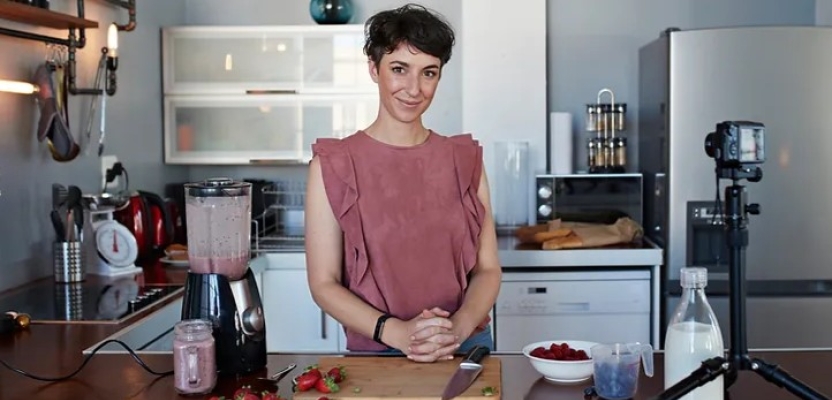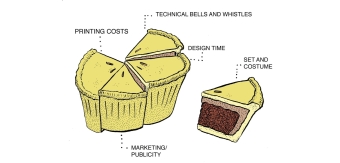The popularity of digital video content is undeniable. Facebook, YouTube, Instagram and TikTok, all heavily video-based, are among the top social media platforms. For many young audiences, these platforms, along with a host of streaming services, are supplanting all others as their primary source of entertainment, news, and search. Likewise, the use of video in marketing is on the rise, and many marketers find video a desirable way to engage their target audience. We tell you how businesses can increase the benefits of video in their marketing.
So Why the Video?
Before we look at what type of video content business owners might consider creating, let's take a look at why video has become such an important marketing tool for many.
-
Video is highly visual in nature and easy to consume, making it an engaging and interesting content format.
-
It spreads easily through social media and other channels, thereby increasing the reach of the marketing message.
-
Creating video content is pretty easy these days. While you may need a script for some specific types of videos – which we'll also talk about below – crafting an effective message can be as simple as turning on your phone's camera.
-
Video can easily be distributed across various platforms and embedded into other content on websites and blogs to enhance its appeal.
-
Video content can differentiate you from competitors. Since many small business owners are slow or reluctant to adopt video marketing, this opens up an opportunity for those who do.
-
Video, especially content on YouTube, is increasingly appearing in Google's organic search results, which isn't surprising given that Google owns YouTube. Furthermore, YouTube itself is a search engine, within which millions of users conduct searches daily. Videos can and should be optimized to appear in search.
-
Video content is authentic and allows business owners to demonstrate their expertise, which are important factors in Google's E-E-A-T (Expertise, Experience, Authoritativeness, Trustworthiness), a significant determinant of organic search visibility.
-
Video adds incredible value on many levels for those willing to explore and experiment.
Now, How Exactly to Use It?
With the importance of video in the marketing mix firmly established, the question many have is: "What type of video should we create?" The answer to this question depends on several factors, as do all marketing decisions, including the type of business and services/products you offer, your target audience, budget, and your imagination.
What should no longer be a concern is the relative quality of the video. Gone are the days when video production required hiring directors, production crews, and polishing to perfection. For many, especially the younger audience, low-budget videos shot handheld are considered more authentic and real – because often they are. Don't hesitate to simply start filming and introducing your business and the products or services you offer to your audience. It's a great first step.
Below are a few types of videos that may fit your business and your customers.
Reviews of Services or Products
Any business that provides services or sells products can use video to highlight and describe their unique offerings.
For example, a landscape designer can create video walkthroughs of lawns, gardens, or patios they've worked on, while a medical spa owner can show how the latest and greatest skin-tightening product works.
Having customers participate in these videos to provide authentic feedback can help build trust with your audience and help your content spread through social media and other channels.
Promotional Videos
Brand advertising naturally lends itself to video content. Many local business owners are familiar with running TV or radio ads, but digital video platforms have opened the door to unlimited possibilities.
Have fun and create your own commercials and promos, again incorporating customers, staff, or relevant business partners. Use your imagination to create entertaining promos for your services, products, or special events.
Customer Reviews
One of the most powerful types of video content you can create or receive is a customer testimonial. It is a form of user-generated content (UGC) that is extremely popular on social media. Positive customer feedback is a certificate of approval of your activities and your business.
The effect of online testimonials for businesses is already well known, but receiving, publishing and sharing authentic video testimonials takes your credibility to the next level. People like to buy from businesses they trust, and many look to testimonials and recommendations as proof.
How-To Videos
Some businesses offer services that lend themselves well to creating value-packed how-to videos. For example, a plumbing company may create and share a video on their website or social channels on how to prevent clogged or frozen pipes as free advice. Then, when those pipes do get clogged or frozen, they will be top of mind for their viewers and just a click or call away. How-to videos have the added benefit of demonstrating the expertise that Google is so fond of.
Q&A Videos
Video can be an excellent way to answer your customers' most common or pressing questions, and, when necessary, include short demos or other relevant visuals for clarity. Additionally, by recording a video, you can avoid the need to answer the same or similar question repeatedly.
Here, too, you can consider involving your audience by allowing them to pose the questions, with you or appropriate members of your team providing the answers. Short video Q&A can be added to enhance the effectiveness of the FAQ section on your website. FAQs, by definition, are solid SEO-oriented content, providing a natural boost to your authority in Google's eyes.
Behind-The-Scenes Videos
The popularity of television shows like "How It's Made" suggests that people enjoy being able to pull back the curtain, go behind the scenes, and get a glimpse of how certain processes work – particularly those that result in a product or service they consume.
These videos are similar to product or service overviews, but perhaps delve deeper into details for those customers who want to know more. Describe and demonstrate a technique, product, or process you specialize in or which is unique to your business. This can set you apart from your competition, both online and offline.
Webinars or Live Event Recordings
Businesses offering professional services can build knowledge and brand recognition, as well as foster a sense of community, by hosting or sponsoring live webinars or real-time events. Anyone participating in these events will be interested in a recording for future reference. These recordings can naturally be shared on a website and social media platforms.
When broadcasting and subsequently sharing these video events via social media, be sure to include unique hashtags, as they serve multiple purposes: brand/event awareness, important search key, and an opportunity to incorporate product or service-related keywords for SEO purposes.
Video Optimization
Digital videos, like any other content, can be optimized for optimal organic visibility in search. When creating, publishing, and sharing these videos, don't forget the following:
-
Incorporate relevant keywords into the video filename, and then into the title, description, and hashtags depending on the platform where the video is being hosted or shared.
-
Add a call to action and link to a relevant product or service page near the top of the video description on YouTube, where it can be easily seen and clicked.
-
Include calls to action and embed links to relevant product, service, and event pages or to other related videos within videos posted on YouTube, Instagram Stories, or other platforms.
As for video length: less is more.
Videos, much like images, are worth at least a thousand words, and we all know today's consumers, especially the youth, have limited attention spans. Where possible, the duration of most videos should fall within the range of one to three minutes, and the shorter, the better for ensuring optimal engagement.
However, on platforms like TikTok, it's common practice for videos to be less than 30 seconds, and YouTube now offers "Shorts," limited to 60 seconds. Additionally, one of the ranking factors on YouTube is engagement time, i.e., whether or not videos are viewed in their entirety, so you want to ensure your viewers are fully engaged from start to finish.
And... Cut!
Incorporating video into a business's digital marketing strategy is not just a trend; it's a necessity. As noted, the accessibility and authenticity advantages of videos created on mobile devices allow almost all business owners to harness this powerful tool relatively quickly.
Video content enables businesses to more effectively convey their messages, connect with the local audience on a personal level, and stand out in the crowded digital landscape.
Your first step, as in any marketing campaign, should be getting to know your audience, the video formats, and the types of platforms they prefer. Then boldly start filming, optimize video for search, distribute it online, and observe/analyze what works and what doesn't.
By being creative and authentic, you'll set yourself and your business apart from competitors. So grab your camera or smartphone, brainstorm creative ideas with your team, and let the power of video propel your business forward. Who knows, your video content might just go viral!




